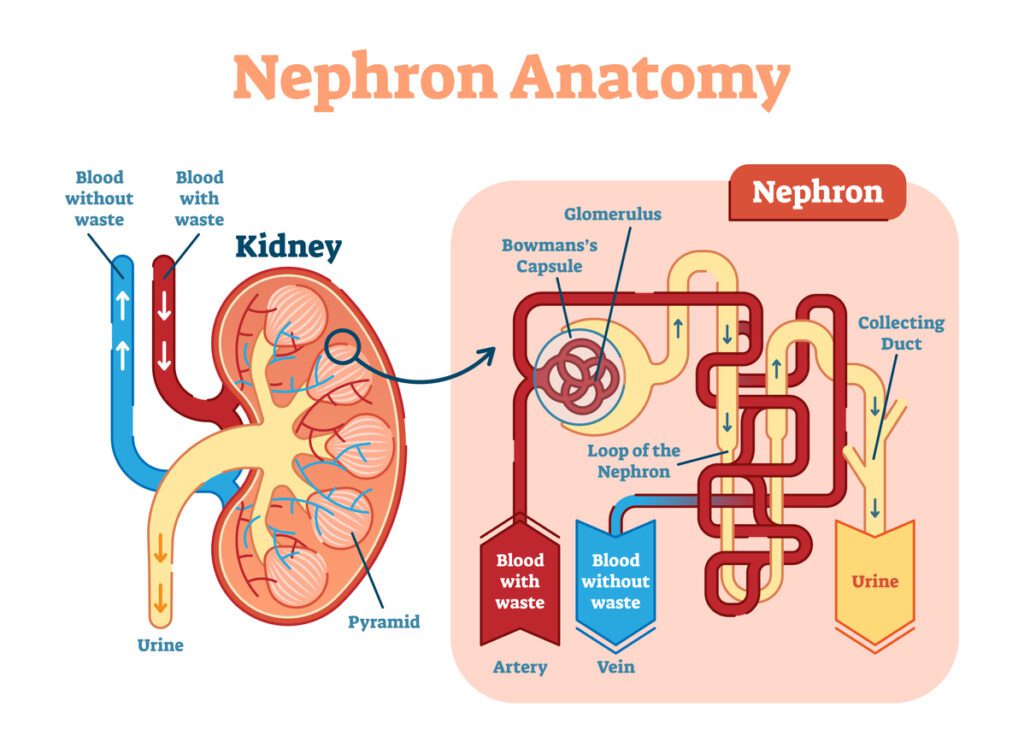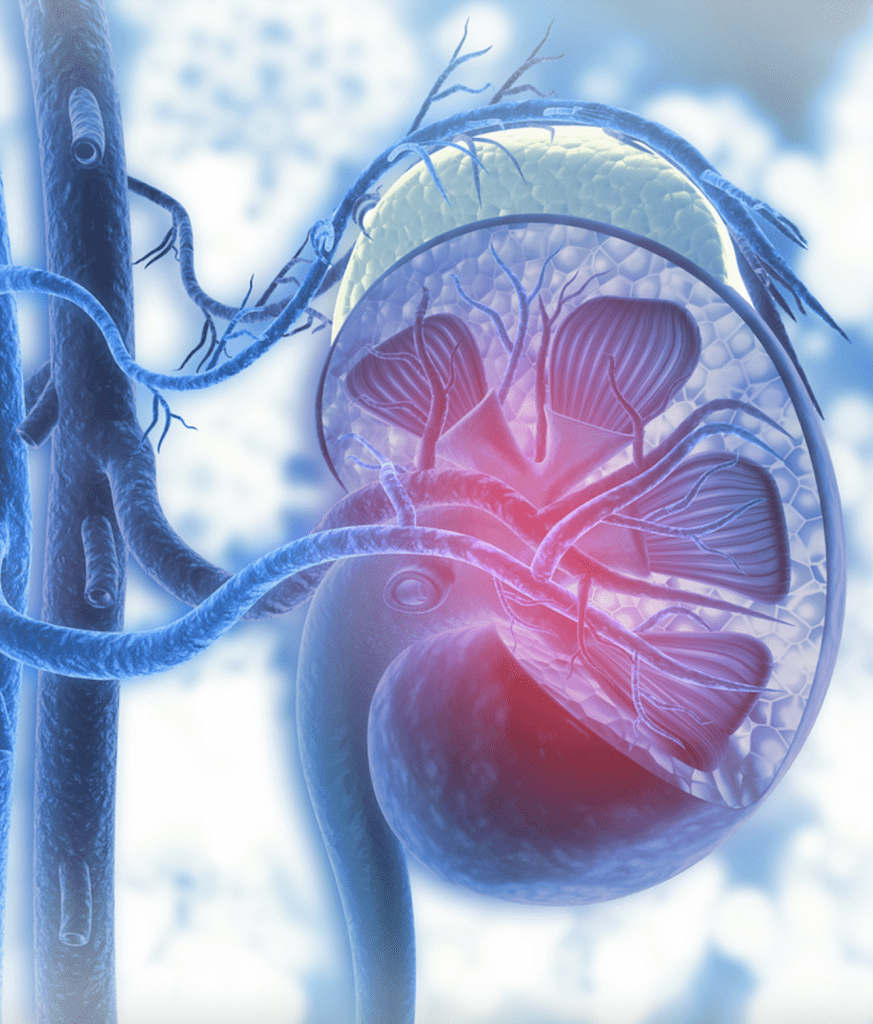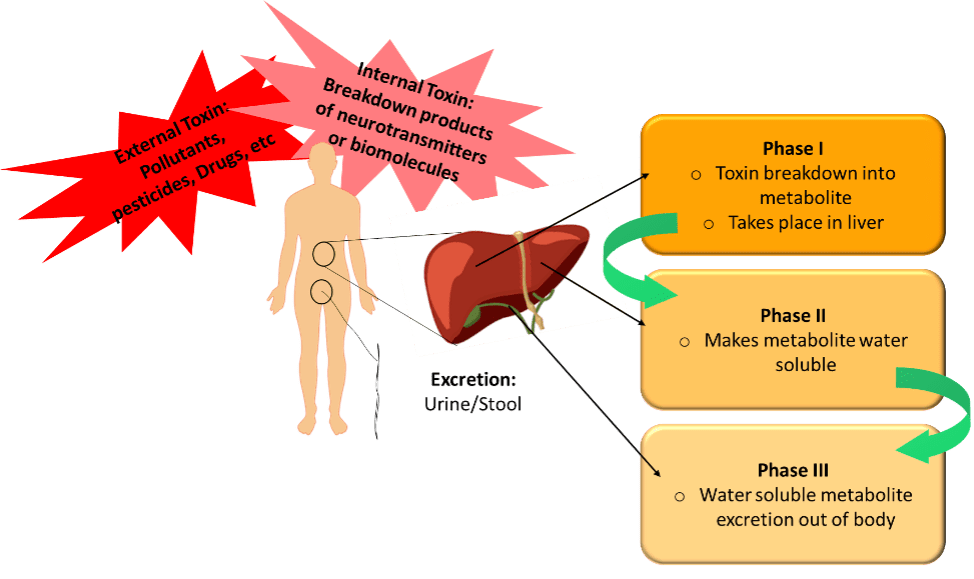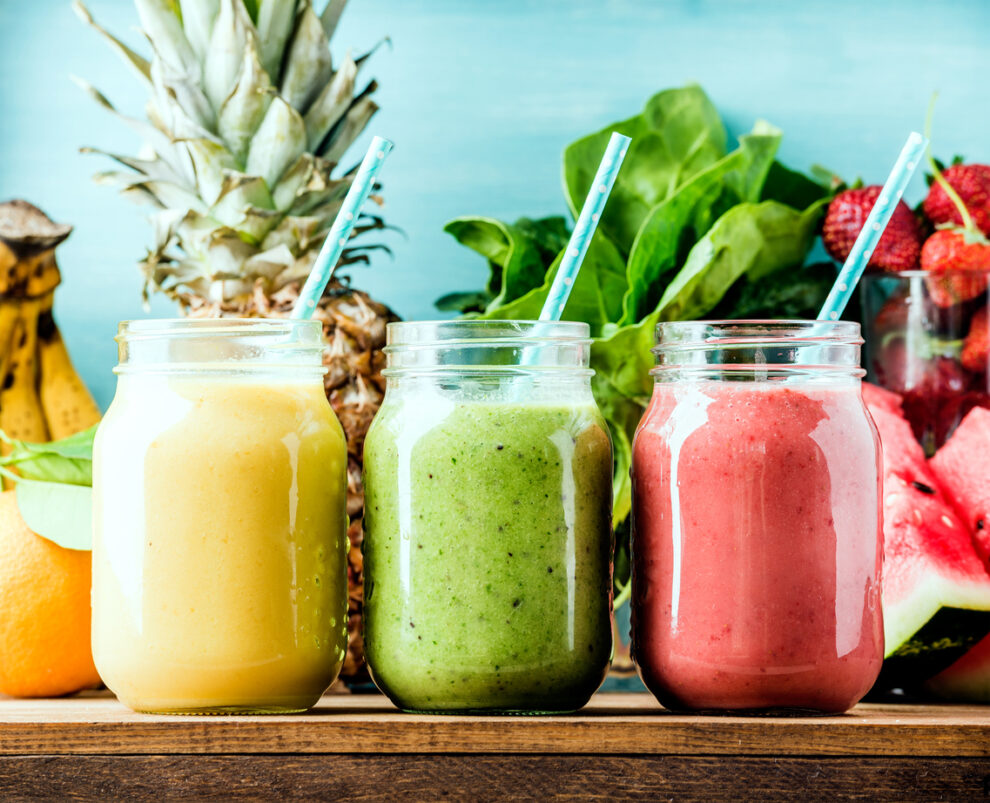Nowadays, we hear about the importance of detox everywhere. But hardly anyone explains what actually happens in your body – on the biological level.
Is detox a myth? Surely not! Detoxification and excretion of toxins are natural, vital biological functions of the body, which can be unburdened and supported by our choices of foods, nutrients, and chemicals we are being exposed to. When our biotransformation and excretion systems are not stressed by too many newly incoming tasks, the body gets the opportunity and resources to take on old, accumulated “waste.” Ask anyone who has gone through times of cleansing – there is no room for doubt that we can actively intensify the process!
We urgently need to know more about detoxification on a biological level to raise awareness and to gain knowledge on how to live a detox and know what we are doing! So, here we dive into the significance of detoxification in biology, why we should take this seriously – and ultimately, how to support those processes!
To learn how to maximize your body’s detox capability, visit our guide here.
Why detox is real and incredibly powerful!
Skeptics raise the argument that detox can not be done by outside actions because those are simply biological processes that run on their own, like digestion or breathing – which is true! However, the biochemical processes involved can actively be supported. In fact, nowadays, we must strengthen our detoxifying and eliminative processes to obtain better health.

We cannot detox the cells from “the outside”: detoxification starts from within the cells (special organelles), followed by the natural drainage into the lymphatic system surrounding the cell (see below), then processed by the liver and excreted through kidneys, colon, skin or even lungs. And while this is all done by the body itself, we can speed up and influence its effectiveness.
Detox is misunderstood and needs to be demystified
“Detox” has become a buzzword now known to everyone. But we all understand something different by this term, ranging from herbal teas, nutritional supplements to dietary protocols, lifestyle changes, or even a spiritual approach.
While all of the above have their place, the meaning of biological detoxification and elimination is one of the most misunderstood concepts in health and is a largely ignored subject in medicine, except for the small sector of environmental and functional medicine. This neglect has far-reaching consequences for health, as detoxification gets more and more necessary (but also tricky) in an increasingly polluted environment and a standard diet that is not natural or suitable for humans.
While raising awareness of the pivotal role of cleansing the body in health is a good thing, the overuse and misuse of the word have significantly damaged our understanding of detoxification in a biological sense!
The body detoxifies and cleanses itself effectively, if…
The body eliminates waste by itself, but this function is reduced drastically due to a modern lifestyle and polluted environment. Most of us suffer from toxic overload and micro-nutrient deficiencies due to everyday toxins, residues of medications, pesticides, and other chemical pollution.
Detox is often misunderstood as something that we do to the body instead of the body’s innate system to cleanse and regenerate itself. We can only create the right environment and stop sabotaging the natural process! Unnatural diets, that deviate from our biologically appropriate diet and exposure to synthetic substances are the two major factors that slow down detoxification.
There is also a lack of understanding that the body’s effectiveness in detoxifying is highly variable, depending on nutrient availability and enzyme expression, but also on the degree of constipation of the lymph fluid – in other words, the detoxification ability and “power” of each of us depends on how pre-damaged we are! If toxins and waste have accumulated within the lymph and cannot be excreted fast enough, detoxification is too slow to keep up with the chronic accumulation. Here is where we enter a negative health spiral.

Biological organisms strive – by default – towards regeneration! However, in a toxic world, we are overcharged with waste. Thus, effective detox is about getting rid of waste faster than it accumulates.
What happens in the body during detox?
First, we need to understand the key principles of how detox in the body works to know how to optimize the process. The goal of detoxification is to keep the cells clean, functional, and thus healthy. Cells take in nutrients they need while excreting what they do not need any more from their metabolism (See how they do that below). The waste products are transported, sometimes transformed, and excreted.
Detoxification processes take place by default and constantly because they are natural and vital functions of the body, of mainly the liver, kidney, and lymphatic system, but also the blood, skin, and lungs.
As the body’s sewer system, the lymphatic system plays a key role in detoxification and cleansing: it is vast and runs throughout the entire body, holds double the volume of blood, and includes the fluid surrounding every cell in the body! Yet, the vital waste removal function is often neglected, as the lymphatic system is mainly known for its function in fat transportation, the immune system, and regulating body fluid levels. Interestingly, the toxin-removing function of immune cells, which circulate in the lymphatic system, also lives in the shadow of the infection-defense function.
Brand new findings show that even brain waste is cleared and transported by immune cells and interstitial fluid (lymph). The lymphatic system in the brain – the glymphatic system – was only discovered in 2013 and opened the way for research on the detoxification of the brain.
What does the body need to eliminate?
What substances does the body excrete on a daily basis? The cells’ own waste, as well as xenobiotics (synthetics) and toxic substances that can interfere with and disrupt cellular function, need to be transported out of the body – safely!
- Metabolic waste refers to the natural metabolic end-products an organism needs to excrete. However, when deviating from our species-specific human diet, we usually have excessive nitrogenous waste from excess protein-heavy foods that stress the kidneys.
- Natural compounds from foods like caffeine, theobromine, and other seed-protective phytochemicals or toxins from infections
- Synthetic compounds and xenobiotics like agrochemicals, air pollutants, fabricants, perfumes, etc. found everywhere, even in tap water
- Medications and their metabolites that we take in directly or via tap water
- Toxic elements like halogens (i.e. fluoride) and heavy metals
Detoxification processes in the body
Overview of the biological detoxification steps:
- Mobilizing toxins: transport of the cells’ waste and toxins into the interstitial (lymph) fluid
- Transportation through lymphatic system
- Bio-transformation to make toxins excrete-able in the liver
- Excretion/elimination by kidneys, skin, lungs, colon
The cells’ waste is excreted and transported in the lymphatic system
Toxins are intelligently stored by the body in places where they do the most minor damage possible. Fat-soluble substances are stored in adipose tissue, and water-soluble ones in the lymphatic system. Toxins are mobilized and transported via fluids to the liver and eliminative organs (see below).

Cells get rid of waste by lysosomal exocytosis: cells contain lysosomes (vesicles, that look like bubbles) that transport waste to the outside of cells. Those “exosomes” merge with the cell membrane and release and excrete metabolic end-products, acids, and toxins into the interstitial space outside the cells. The interstitial space contains the lymph fluid that surrounds the cells. From there, waste is transported via lymph, and sometimes blood, to the exit routes.
Cells take in nutrients from the bloodstream that they need. They can also excrete unwanted substances into the lymph or into the bloodstream (substances it releases for other purposes like signaling, too). The cellular waste is “dumped” into the lymph fluid surrounding the cells and is then transported (lymphatic system), transformed (liver), and excreted (kidneys and intestines). The lymph system is the body’s sewer system and a central part of the immune and regenerative system (Dr. Robert Morse).
Biotransformation and safe excretion of toxins
The liver is a filter and transformation station, which prepares toxins for elimination in the kidneys. The liver transforms harmful compounds, turning them water-soluble so they can be transported in the (watery system) blood to the kidneys and intestines. The kidneys and the colon are the eliminative organs that remove toxins from blood and lymph fluid. Other elimination routes are also present, like the lungs, skin, and about every surface and exit the body offers – as we experience during intense detoxification!
- Biotransformation in the liver: In the liver, water-insoluble (lipophilic) xenobiotics and endobiotic compounds are transformed into water-soluble substances so that the kidneys can excrete them (McCarthy & Sinal, 2005). This happens in the liver. The human body is a water-based system, and substances are transported in a watery environment. Therefore, one primary function of the detoxification pathway is to transform the lipophilic form of toxins into a less-harmful hydrophilic form. It means that through this pathway, our body converts the lipid-soluble toxins into a water-soluble form so that they are easily excreted from the body. Such a type of transformation in the pathway is called biotransformation and builds the core of what we call detoxification in the liver. The enzymes and proteins involved in this detoxification process are generally categorized into three groups: functionalization enzymes in Phase I, conjugation enzymes in Phase II, and elimination enzymes in Phase III. There are three types of organs that participate in the detoxification pathway: the liver, the kidney, and the intestine. The function of the liver is to convert toxins into excretable forms.
- Excretion by the kidneys and colon: The kidney provides the route for these toxins to excrete through urine. The intestine’s role is to help in healthy bowel movements and prevent the accumulation of toxins in the body by transferring them to the liver. The kidneys have an essential role in eliminating the end-metabolites from excessive dietary proteins: Urea is the elimination of nitrogen from the amino acids in proteins (i.e., meat). However, as frugivores, our kidneys are not equipped to process the amount of protein in an animal-based diet. That is why too much protein damages the kidneys! As a principal eliminative organ, kidney health is vital to prevent the accumulation of toxins within the body (read more here on the genes involved in this process). Therefore, avoiding a protein-heavy diet and foods that are not species-appropriate is the number one factor in effective and successful detoxification!

Overcharged kidneys lead to backed-up lymph fluid containing accumulated metabolic waste.
Optimally functional kidneys, with healthy filtration, are crucial to avoiding toxin accumulation and accumulation of acids (learn more here). Our species-appropriate diet (see below) is kidney-friendly and avoids shutting them down over time – unlike most other types of diets.
Reversing the downwards spiral of toxin and waste accumulation
With the increased pollution levels in our environment, the concentrations of toxic substances have increased to an alarming level. The increased concentration means that our bodies have become vulnerable to oxidative stress, leading to a high probability of toxicity. Due to increased exposure, our bodies can develop what is called a “toxic burden.” As described in the detoxification pathway, the conjugation genes in Phase II are responsible for converting the lipid-soluble intermediates from phase I to water-soluble forms.
Three phases of detoxification in the liver
The three phases of the detoxification pathway occur predominantly in the liver. When a toxin enters the body, the intestine transfers it to the liver for further breakdown. However, some toxins in the healthy intestines can also be excreted through the feces (see detailed illustration and description here).
- Phase I enzymes allow the body to neutralize the toxic effect of the pollutants. In phase I, the toxins are converted into free radicles (OX.), intermediate products. These harmful radicles are then neutralized by antioxidants in phase I and transfer to phase II for biotransformation.
- Phase II enzymes convert the pollutant into a form that the body can bear without developing any reaction against it. In phase II, the intermediate toxins are converted into the water-soluble form. They are sent to the kidneys, where phase III occurs.
- Phase II enzymes promote pollutant efflux and influx out of the cell or inside the cell. In phase III, the water-soluble toxins are excreted from the body through urine.

Figure: Phases of detoxification. Detoxification of internal and external toxins mainly takes place in the liver. At phase I, toxins break down into fat-soluble products. In phase II, these products are further modified into water-soluble metabolites. Finally, the excretion of these metabolites takes place through bile, urine, or stool.
However, the functions of these genes are impaired if the toxins in the environment bring about changes in the genetic makeup leading to slow enzymatic activity. Due to the reduced activity of the enzymes, the genes cannot produce the proteins at a rate higher than the rate at which the toxins enter the body. In such a condition, the toxins accumulate in the intestines. Rather than going into the kidneys for excretion, these toxins recirculate in the blood lipophilic form. Eventually, they accumulate in fats and other organs such as the brain and heart.
This downward spiral needs to be stopped and reversed as early as possible by drastically reducing the toxic burden on the biochemical detoxification system and optimizing nutritional co-factors that keep the enzymes running!
Breaking the “toxic world” taboo and study detoxification
Detoxing effectively is a major challenge in today’s toxic world, as our innate cleansing processes are overburdened and even disrupted. Luckily, we can avoid toxin and waste accumulation and speed up the excretion by creating the best possible conditions to reduce the toxic burden. We can get the most out of our body’s own detox functions by adopting the natural human diet, fruit fasts, nutrition, and sticking to nature.
Due to the increased use of chemicals, toxins have infiltrated almost all spheres of life. As a result, they are ingested or absorbed by humans at a greater rate than in the past. Exposure to such toxins directly threatens human health and even survival. Therefore, it is essential to understand the body mechanism which helps us in detoxification. Without understanding the detoxification process, it is impossible to limit the exposure and develop the areas of understanding where biological advancements should be focused to counter the effects of toxicants.
Further, toxic exposure should not be perceived exclusively as a situation when someone gets acute poisoning. It is urgent to know more about the accumulative processes within the body from different sources and about the interaction between different substances – which are not toxic on their own – but are synthetic and, therefore, do not belong in the body. Chronic exposure causes slow damage, decreased functionality of cells, and many chronic issues. This is called toxic burden or toxic overload and leads to degeneration instead of regeneration.
Despite the scientific nature of the subject and countless studies in this area, toxin exposure and detoxification are extremely neglected in health sciences. Health seekers are on their own when embarking on the journey of detoxification, which is not only a shame but can actually be scary, especially for people who are anxious about detox symptoms.
What we should have more research on:
- how to support and accelerate detoxification processes
- how to do proper testing of the toxic burden
- chelation and removal of metals and other toxicants
- the cumulative effect of toxins on degenerative processes
- the effects of toxins on epigenetics
- the effects of detoxification on self-regeneration
- the reversibility of epigenetic pattern in chronic conditions
References
- I. Romieu, H. Moreno-Macias, S. J. London, Gene by environment interaction and ambient air pollution. Proceedings of the American Thoracic Society. 7, 116–122 (2010), doi:10.1513/pats.200909-097rm.
- 3 phases of detoxification – Metagenics, inc.. (available at https://www.metagenics.com/mas_assets/media/metagenics/pdf/MET2242-Detoxification-Information-Sheet_iPad.pdf).
- Sharon Reynolds, Immune cells control waste clearance in the brain. National Institutes of Health (2022) (available at https://www.nih.gov/news-events/nih-research-matters/immune-cells-control-waste-clearance-brain).
- Glymphatic system. Wikipedia (2023) (available at https://en.wikipedia.org/wiki/Glymphatic_system).
- Metabolic waste. Wikipedia (2023) (available at https://en.wikipedia.org/wiki/Metabolic_waste).
- A. Robuck, These unregulated, potentially dangerous chemicals are probably already in your bloodstream. Massive Science (2018) (available at https://massivesci.com/articles/chemical-exposure-pfas-water-food/).
- S. T. Thomsen, J. A. Herrera, L. Jakobsen, S. Fagt, S. M. Pires, Burden of disease of heavy metals in population clusters: Towards Targeted Public Health Strategies. European Journal of Public Health. 29 (2019), doi:10.1093/eurpub/ckz185.658.
- P. Schlosser et al., Genetic studies of urinary metabolites illuminate mechanisms of detoxification and excretion in humans. Nature Genetics. 52, 167–176 (2020), doi:10.1038/s41588-019-0567-8.
- S. Buratta et al., Lysosomal exocytosis, exosome release and secretory autophagy: The autophagic- and endo-lysosomal systems go extracellular. International Journal of Molecular Sciences. 21, 2576 (2020).
- J. E. Moore, C. D. Bertram, Lymphatic system flows. Annual Review of Fluid Mechanics. 50, 459–482 (2018), doi:10.1146/annurev-fluid-122316-045259.
- T. C. McCarthy, C. J. Sinal, Biotransformation. Encyclopedia of Toxicology, 299–312 (2005), doi:10.1016/b0-12-369400-0/00137-x.
- D. A. Rubenstein, W. Yin, M. D. Frame, Flow through the kidney. Biofluid Mechanics, 325–345 (2012), doi:10.1016/b978-0-12-381383-1.00012-6.
- LSUHSC School of Medicine – Biochemistry and Molecular Biology. LSU Health New Orleans (available at https://www.medschool.lsuhsc.edu/biochemistry/).
- K. Kalantar-Zadeh, H. M. Kramer, D. Fouque, High-protein diet is bad for Kidney Health: Unleashing the Taboo. Nephrology Dialysis Transplantation (2019), doi:10.1093/ndt/gfz216.
- WCM-Q research helps identify body’s ‘Detox’ genes. Qatar (available at https://qatar-weill.cornell.edu/media-center/news/story/wcm-q-research-helps-identify-body-s-detox-genes).
- Kidney+filtration, Raw Figs – Your Health Search Engine (available at https://www.rawfigs.com/?s=kidney%2Bfiltration®=0).
- H. Wen et al., Enhanced phase II detoxification contributes to beneficial effects of dietary restriction as revealed by multi-platform Metabolomics Studies. Molecular & Cellular Proteomics. 12, 575–586 (2013), doi:10.1074/mcp.m112.021352.
- R. T. D. says: et al., Functional Medicine Detox Phases 1, 2, and 3. Paris Healing Arts (2023) (available at https://www.parishealingarts.com/functional-medicine-phase-detox/).


Add Comment